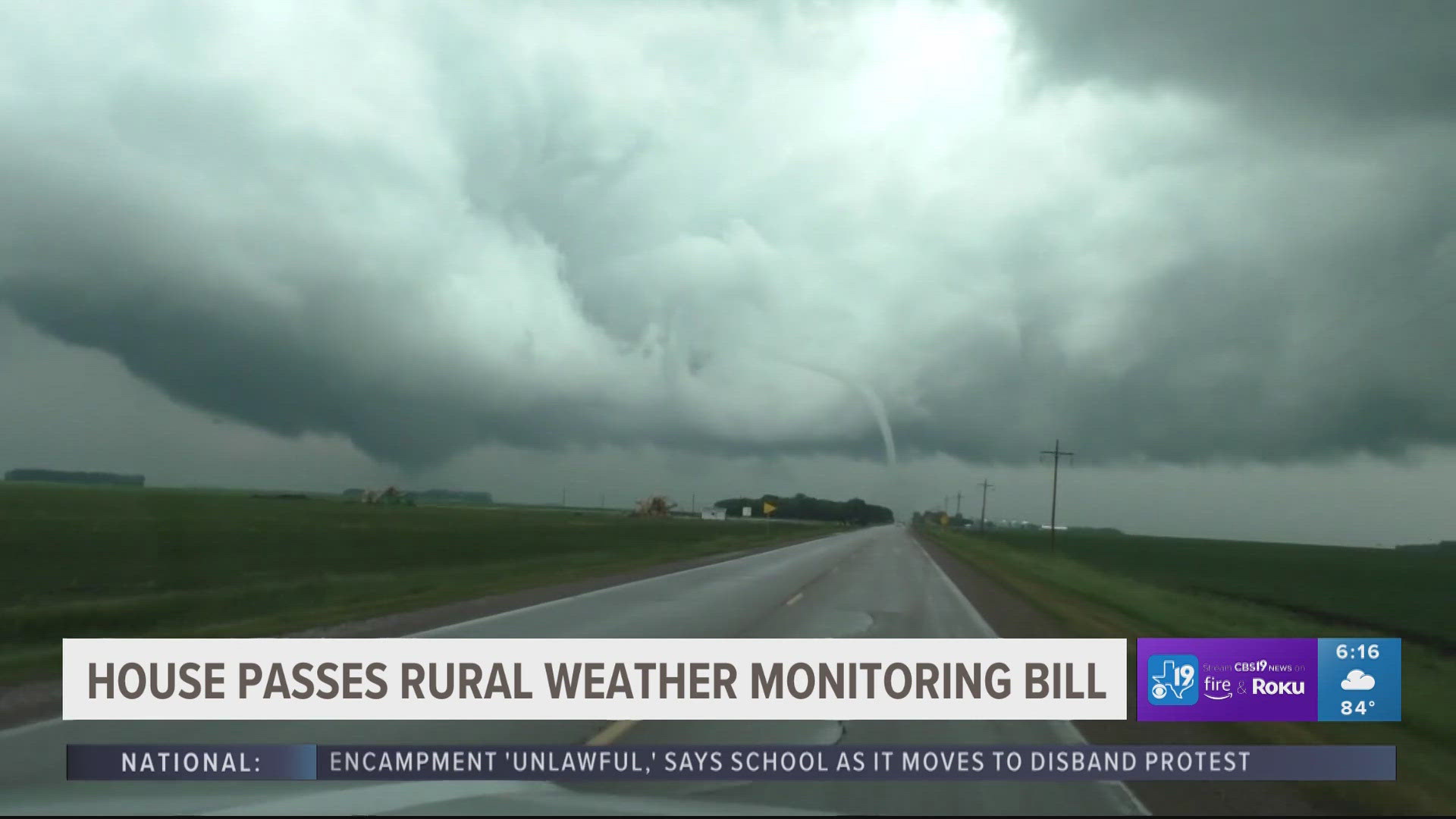WASHINGTON D.C., DC — Editor's Note: The above video aired in October 2023.
A bill that aims to close rural weather radar gaps like the one in East Texas passed in the U.S. House of Representatives Tuesday.
U.S. Congressman Nathaniel Moran, who represents East Texas in the House, announced the passage of House Resolution 6093, the Weather Act Reauthorization Act of 2023. Within the bill is Moran's Rural Weather Monitoring Systems Act, which would require a study to review current weather monitoring systems in rural areas.
“When it comes to inclement weather, every second counts. Across America, the best weather monitoring radars are naturally centered around metropolitan areas – leaving small towns and rural communities between radar coverage areas and ultimately blind to certain weather events," Moran said. "In East Texas, we are familiar with summer storms, but due to gaps in weather monitoring systems in rural areas, residents do not always have adequate time to prepare in the event of an emergency."
The bill will still have to pass through the Senate and then be signed by President Joe Biden before becoming law.
Moran said forecasting in rural areas of the U.S. can prove to be difficult because of radar locations are in major metropolitan areas, which could leave rural areas with less real-time weather data. In East Texas for example, the nearest Next Generation Radars (NEXRAD) are in Shreveport and the Dallas-Fort Worth Metroplex, leaving many parts of East Texas without access to critical weather information.
The Rural Weather Monitoring Systems Act would review the monitoring systems to look into weather gaps and help in implementing solutions to strengthen coverage. Moran said identifying these areas within weather radar is "crucial for the safety of our communities in East Texas and protecting key economic sectors."
"For the safety and security of rural Americans, establishing access to accurate weather monitoring systems that have the ability to track life-threatening weather events makes all the difference between life and death," Moran said.
In an interview with CBS19 in 2023, Moran said a study showed increasing the lead time of tornado warnings by just five minutes. should reduce injury by 47%.
"Those are telling statistics that say minute-by-minute we can save lives," he said.
The National Oceanic and Atmospheric Administration (NOAA) map shows 34 holes where Next Generation Radars (NEXRAD) have limitations. That includes many areas here in East Texas.
NEXRAD are the backbone of severe weather coverage. Originally commissioned in the 1990s, the weather service upgraded the radar systems in 2013 for better detection. The radars can detect rain, snow or ice 200 miles away. But as the distance increases, so does the level of detail for forecasting.
The gap occurs because of the curvature of the Earth and the radar beam travels straight, meaning some severe weather is too far away for radars in Shreveport and Fort Worth to see.
“We need a system here in between that fills in the gap," Moran said.

